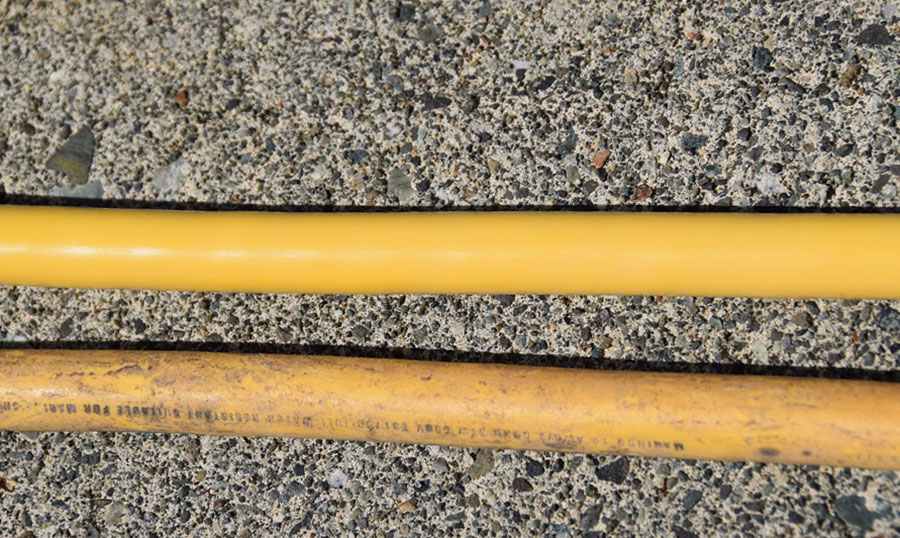 Joe Follansbee’s Fyddeye Guide to America’s Maritime History is advertised as the “most comprehensive guide to historic ships, scenic lighthouses and maritime museums.” It contains over 2,000 listings of ships, lighthouses, museums, maritime research centers and organizations and has some nice black and white photographs and three or four short but somewhat inconsequential essays. Overall, it left me foundering, as though navigating the stacks of the Library of Congress without a well-thought-out catalogue.
Joe Follansbee’s Fyddeye Guide to America’s Maritime History is advertised as the “most comprehensive guide to historic ships, scenic lighthouses and maritime museums.” It contains over 2,000 listings of ships, lighthouses, museums, maritime research centers and organizations and has some nice black and white photographs and three or four short but somewhat inconsequential essays. Overall, it left me foundering, as though navigating the stacks of the Library of Congress without a well-thought-out catalogue.
Unfortunately, the book is not very well organized. Following a preface and brief introduction, 12 chapters, varying from two to 86 pages, contain listings of maritime history topics, each listed in slightly different ways. Chapter one, “Ships,” lists over 600 ships, ferries, tugboats, warships, steamers, and others and is organized by the type of vessel listed. Want to just look for ships in your state or region? You’ll have to plow through all the listings to do it. Want to look for sites by city? Go to the main index, but you will not find sites indexed by states, subjects, national parks, state parks or any other imaginable way, which is a shame.
Subsequent chapters offer other organizational approaches. The “Museums,” chapter is organized into two large groups — maritime museums and other museums — and within each the listings are by state. This is considerably more useful than the type-of-ship organization in chapter one, but here, again, the Guide’s main index is of little help. Chapters on “Lighthouses and Lightships” and “Life Saving Stations,” are listed by region. Also, three maps are added to the lighthouse listings, but they are not well tied to the listings, a problem that suggests another listing methodology might have been employed: a numerical identification for each listing with an alphabetical prefix or suffix for each chapter (e.g., S120 for Ships, listing 120; M31, for Museums, listing 31). Added to the main index, this would be an extremely useful way of quickly finding listings.
Additional chapters include one covering maritime heritage districts, such as Merrill’s Wharf Historic District in New Bedford, Massachusetts; markers and monuments, such as the National Rivers Hall of Fame in Dubuque, Iowa; and stand-alone “structures and sites,” such as the Municipal Ferry Terminal in San Pedro, California. Another chapter lists maritime organizations, from the National Park Service’s Maritime Heritage Program to the Dorchester Skipjack Committee in Cambridge Maryland, and two chapters, which could have been combined, list education programs and research libraries.
Although it might not be fair to point out omissions, I cannot help but mention a couple. The Intracoastal Waterway (ICW), authorized in 1919 by the U.S. Congress and maintained by the Army Corps of Engineers, is a linear historical site most worthy of listing, along with some of its component parts, such as the Dismal Swamp Canal, opened in 1805 and still the oldest continually operating canal in the U.S. Also, perhaps because Follansbee includes Puerto Rico and the U.S. Virgin Islands in his compilation of sites, I was surprised not to find listings from the Bahamas, much closer to the eastern seaboard and a regular destination for many American sailors. How could one leave out the Elbow Key Lighthouse in Hope Town, Abaco? It is one of the last operating kerosene-fueled, first-order-Fresnel-lens lights in the world, and the Bahamas Lighthouse Preservation Society which is responsible for its preservation and continued operation is a very active organization, closely linked to the United States Lighthouse Society (which is listed).
And, I don’t want to be picayunish, but more careful copy editing might have caught the error in presenting latitudes and longitudes given for many of the Guide’s listings. Unfortunately, they are given, for example, as “Latitude 38.7037 Latitude -76.3386.” I suppose those of us who are close to the sea will recognize the error, but it’s a shame it wasn’t caught before press time. Moreover, it may make readers wonder how many other errors there are in the Guide.
My observations aside, I am greatly impressed by Joe Follansbee’s effort to assemble this guide. It was no small task and the fact that he lists all the resources in the Guide on his website, <www.fyddeye.com>, and is updating, adding overlooked sites and resources, and offers a keyword search capability makes the project all the more worthwhile. But wouldn’t it be wonderful to have a fully searchable CD-ROM with active links to resources with, or in addition to, the printed version?
The Fyddeye Guide to America’s Maritime History by Joe Follansbee, Ed. (Fyddeye Medie, 2010; 394 Pages)




